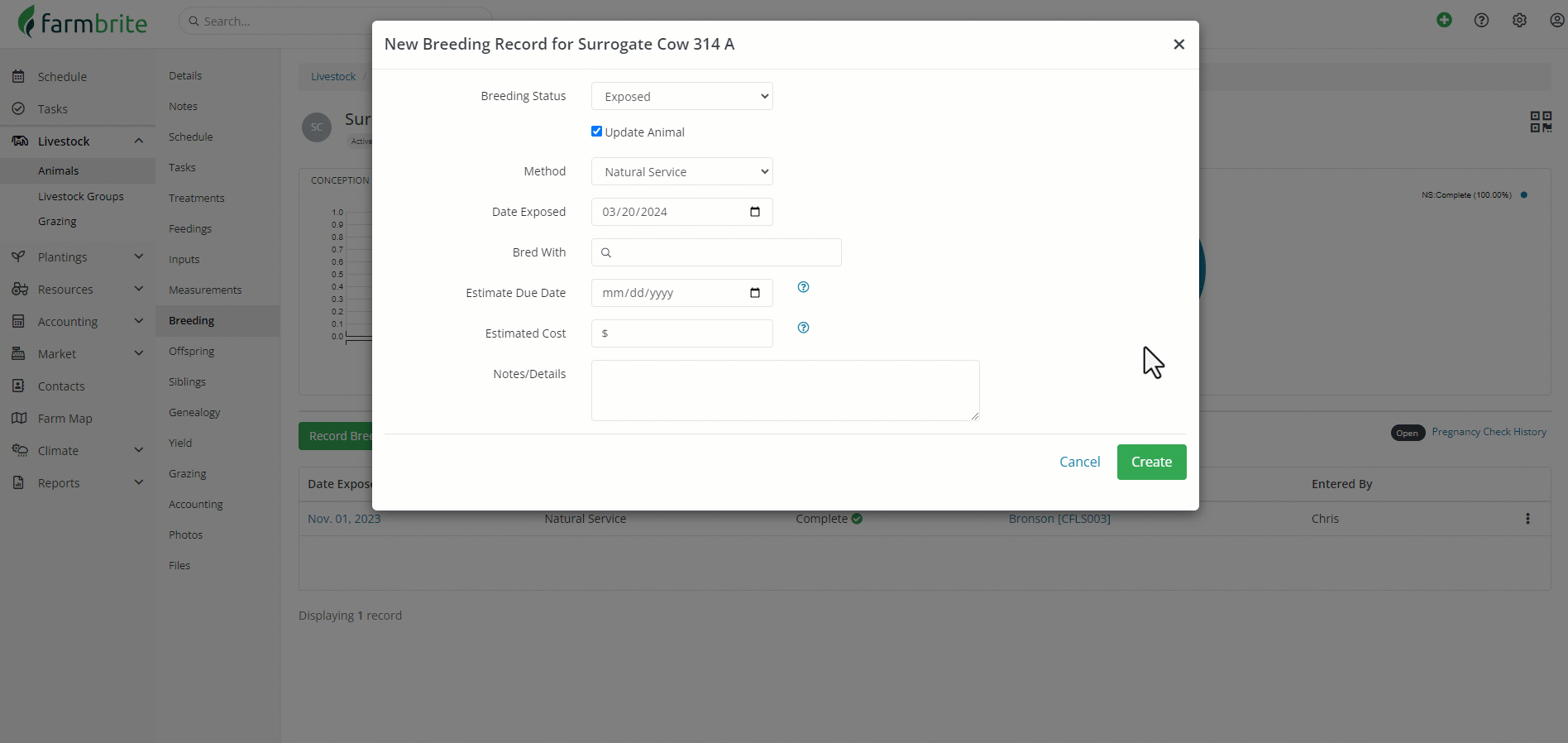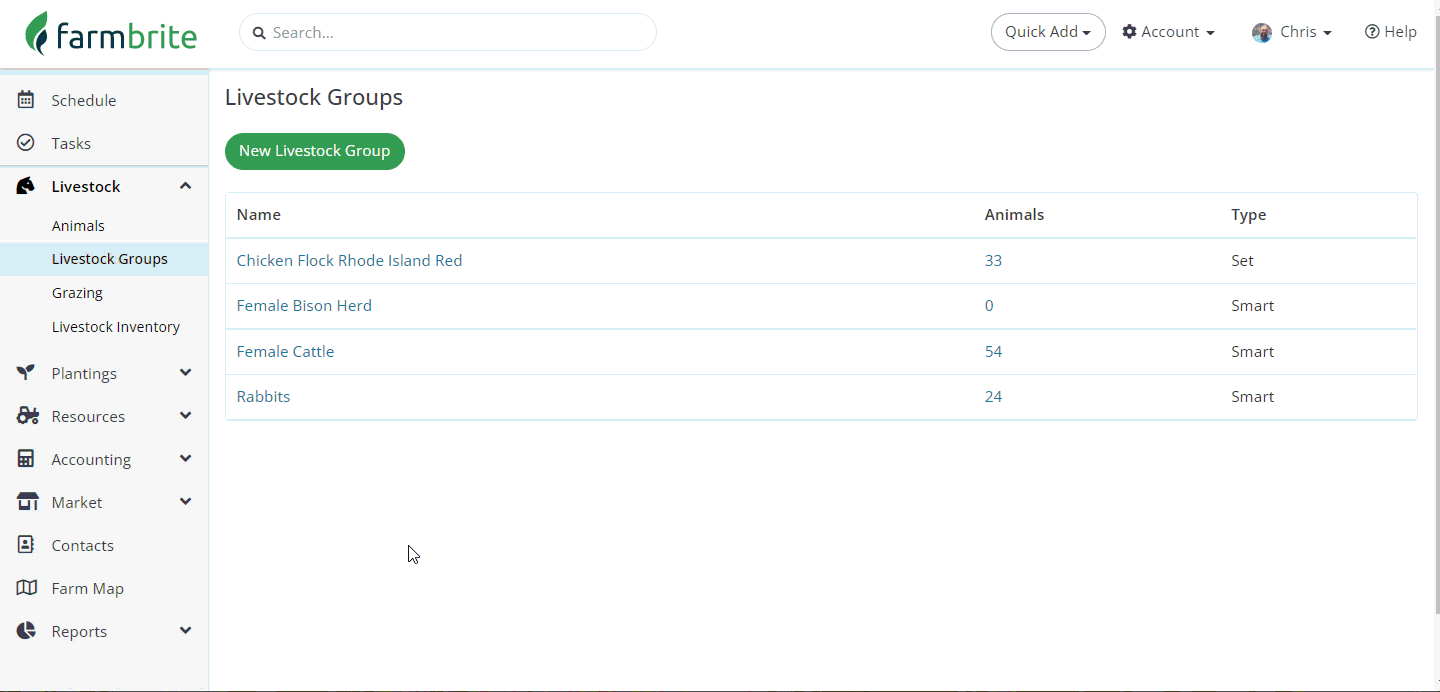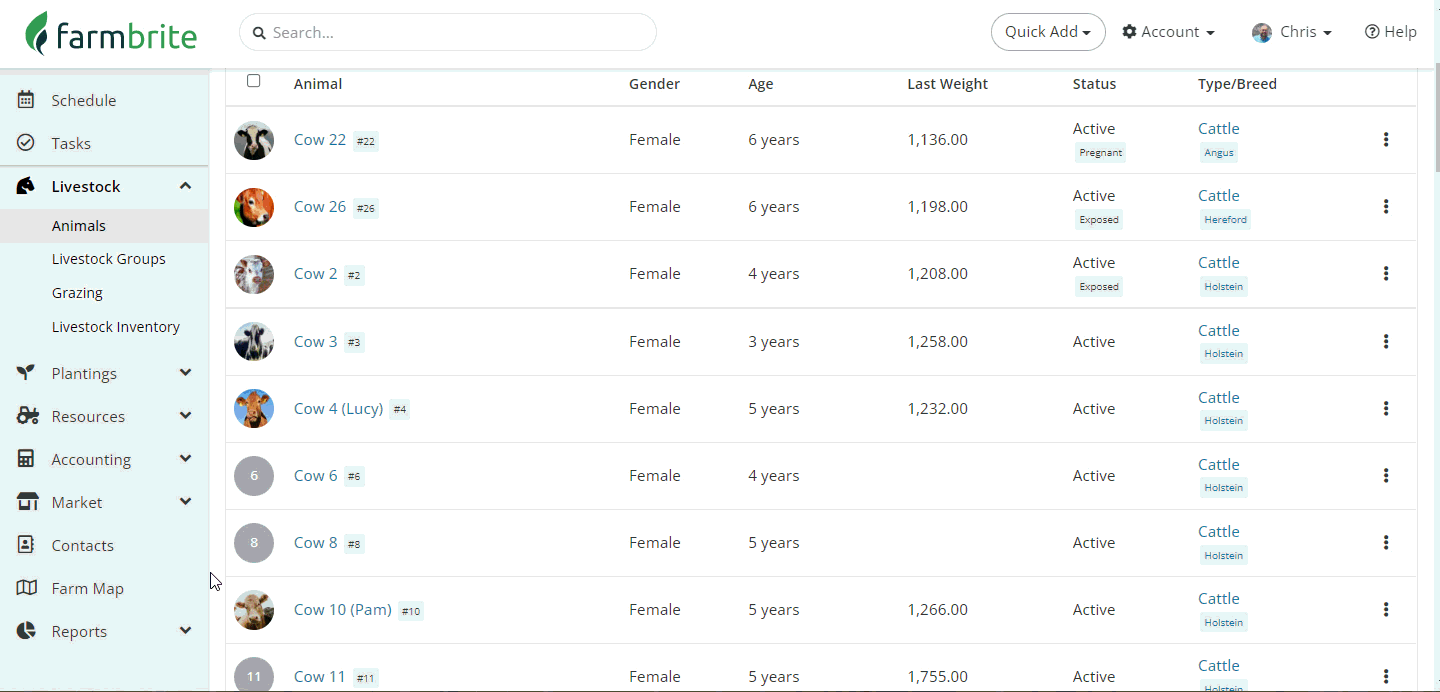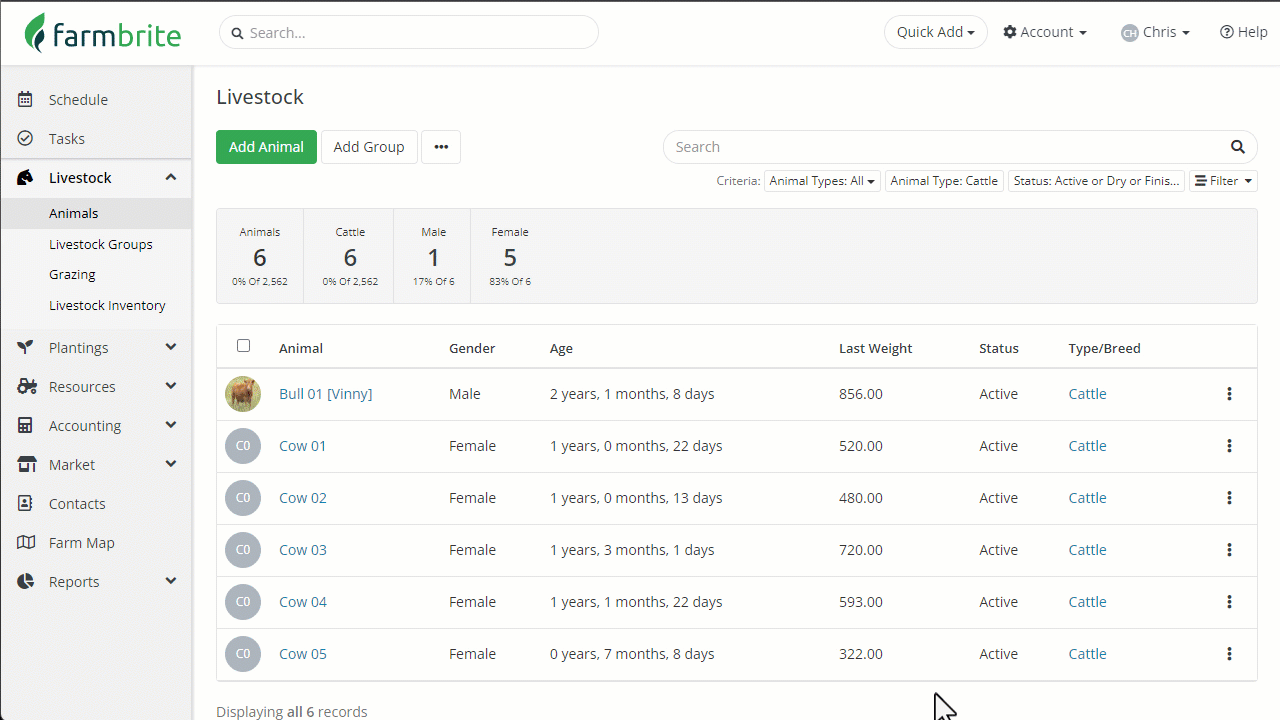Keeping detailed records of your livestock reproduction is critical to promoting the health and wellness of your herd. You'll likely want to track lineage and pedigree, as well as dates and methods used. This data is valuable to chart trends and outcomes to improve your ranch operations and increase productivity. Its easy to track all of this in Farmbrite.
You'll have two choices when creating breeding records. They can be added to an individual animal, or to an entire livestock group at once. We've broken down your steps for each option below.
Recording Breeding for Individual Animals
To create a breeding record for a specific animal, you'll first select that animal from your Livestock list. Navigate to Livestock, choose Animals, and find the animal you'd like to work with. Next, select the Breeding menu, and click the button to Record Breeding. You'll see a new window pop up asking for information about the Breeding.

Note that you can also start this process from the Quick Add Menu on your Farmbrite Dashboard, or from the Record Activity Button on the individual animal to save time. Accessing the Breeding section in the image above will display past breeding information, as well as charts and graphs of past breeding records.
You'll next supply information about the livestock breeding.
- Breeding Status - Select the current status of this breeding record; if you're just starting, this is likely Exposed, but can later be updated to Pregnant, Failed, or Complete by recording a Pregnancy Check.
- Method - Choose how this breeding was accomplished. Pick from Natural Service, Artificial Insemination, or an Embryo Transfer.
- Data Exposed - When did the breeding occur?
- Bred With - Select a male animal to associate with the breeding.
- Estimated Due Date - If you are creating a breeding record with the pregnant status, you can set a due date here. Leave this blank if they are Exposed but not yet confirmed pregnant; you can add pregnancy checks and set this later once they are pregnant.
- Estimated Cost - Add your cost for stud fees, artificial insemination, or embryo transfer.
- Notes and Details - Write any notes or comments that you want to record for this breeding.
If you select Artificial Insemination as your method, you can also add information about the technician who performed the procedure, and reduce your semen inventory if you're tracking that as a Resource.

If you select Embryo Transfer, you'll have even more fields to properly track the genetic mother and father to track correct genealogy. Like artificial insemination, you can also reduce your embryo inventory if you're tracking them in Farmbrite. Be aware that while you will be tracking the breeding record on the surrogate, when birthed, the offspring will inherit the pedigree of the genetic mother and father, and be listed under their offspring tab.

After supplying your details, click Create to save the record. You will see the animal's details updated with the new breeding status, and the date exposed. The sire from the breeding record is also displayed for easy reference.

Recording Breeding in Bulk
You can also create breeding records for multiple animals at once. This can be accomplished in a few different ways.
To apply breeding records to an entire group, choose Livestock Groups and select the group you want to work with. From there, you'll find the process very similar to the instructions above. Just select the Breeding tab, click Record Breeding, and supply the details that will apply to all the animals in the group.

To apply breeding records to multiple animals at once, even if they are not in a Livestock Group together, you can select them from your Livestock list, and then choose Bulk Actions and Record Breeding.

Additionally, Exposed status breeding records can be automatically created if you move an intact male into a grazing location that already contains females from the same species. A checkbox will confirm if you if you'd like to mark the females as exposed, and you can uncheck this if you do not want to create the breeding records.
Note this only happens when moving a male to a location that already contains females; breeding records can not be created when moving females to a location that contains a male. Also, know that age plays a role here as well - these records will only be created for animals older than six months, except in these cases: Cattle must be 1 year old, and chickens 4 months.

Now that you've learned how to record your livestock breeding, move on to the next article in this section to learn how to perform a pregnancy check.